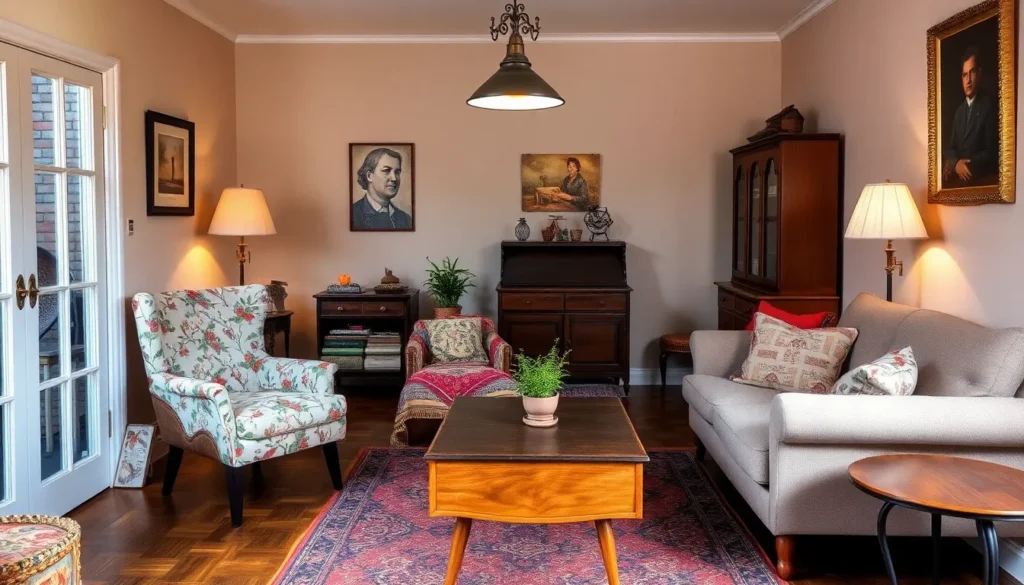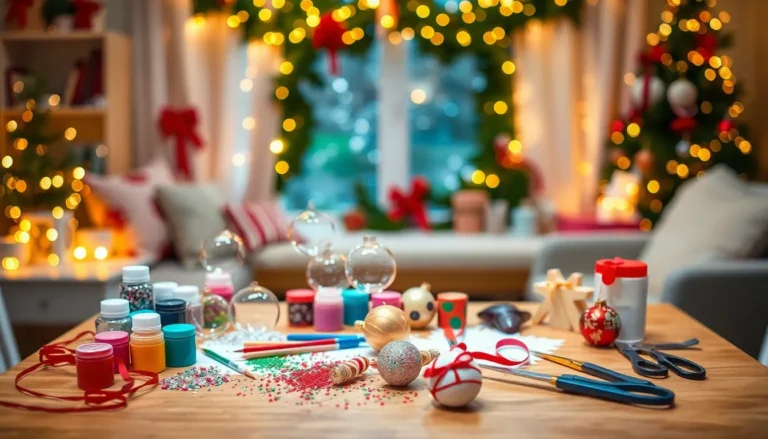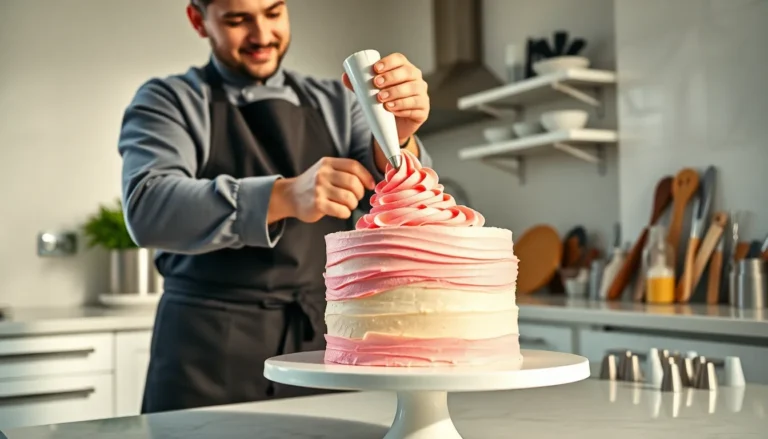Table of Contents
ToggleIn a world dominated by sleek modern designs, vintage home style stands out as a warm and inviting alternative. This aesthetic embraces the charm of bygone eras, blending nostalgia with unique character. Whether it’s through treasured antiques or retro color palettes, vintage style creates spaces that tell a story and evoke memories.
Homeowners are increasingly drawn to vintage elements, not just for their beauty but also for their sustainability. By incorporating recycled materials and heirloom pieces, they craft environments that reflect their personality and values. Vintage style isn’t just a trend; it’s a celebration of history and craftsmanship that transforms ordinary homes into extraordinary havens.
Understanding Vintage Home Style
Vintage home style captures a unique aesthetic that blends nostalgia with personality. This style emphasizes the beauty and charm found in older designs, often utilizing antiques and retro elements.
Definition and Characteristics
Vintage home style refers to design elements and decor that reflect past eras, typically ranging from the 1920s to the 1970s. Characteristics include:
- Antique Furniture: Original pieces from previous decades that exhibit craftsmanship.
- Color Palettes: Soft, muted hues or bold colors that evoke specific periods.
- Patterns and Textiles: Floral prints, gingham, and intricate designs that add warmth.
- Layered Decor: A mix of various items, such as vintage photos, books, and accessories that create personalized spaces.
- Sustainable Solutions: Recycled materials and heirloom items that promote eco-friendly practices.
Vintage home style encourages the incorporation of history and storytelling into living spaces.
Popular Vintage Eras
Several eras have significantly influenced vintage home style, each offering distinct features:
- 1920s: Art Deco influences with geometric shapes and bold colors.
- 1930s: Streamlined designs featuring natural motifs and warm color palettes.
- 1940s: Mid-century modern elements highlighting simplicity and functionality.
- 1950s: Bright colors, kitschy decor, and an emphasis on family-oriented designs.
- 1960s: Psychedelic patterns and innovative materials reflecting cultural changes.
- 1970s: Earth tones, bohemian styles, and a focus on comfort.
These popular vintage eras provide diverse options for incorporating historical charm into contemporary homes.
Key Elements of Vintage Home Style
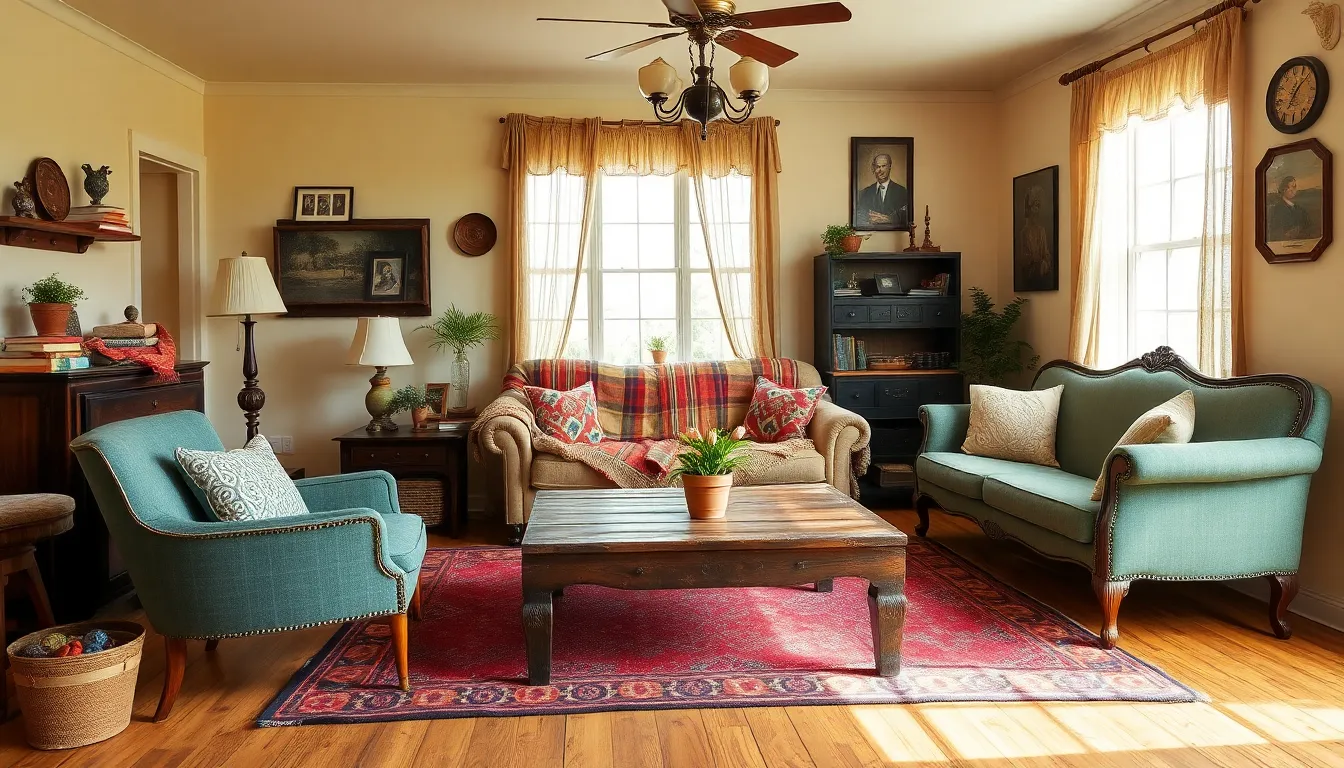
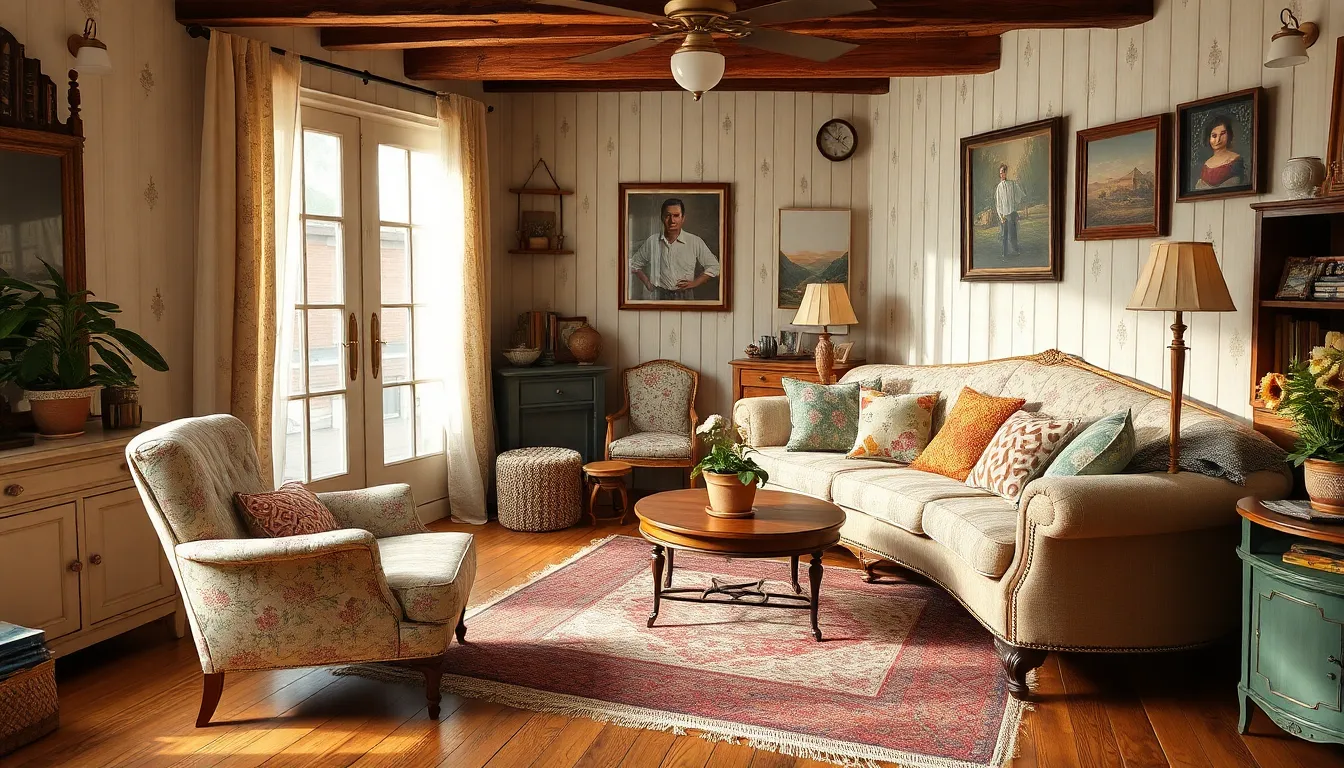
Vintage home style embodies distinctive elements that contribute to its charm and character. Color palettes, furniture choices, and textiles all play crucial roles in defining this timeless aesthetic.
Color Palettes
Color palettes in vintage home style reflect both warmth and nostalgia. Pastel shades like mint green, soft pink, and lavender create a gentle atmosphere. Bold colors such as deep reds, navy blues, and mustard yellows add personality. Layered color schemes often include muted tones combined with vibrant accents, allowing for a harmonious yet eclectic look. Interior spaces often embrace earth tones to create a cozy environment that feels inviting and lived-in.
Furniture Choices
Furniture choices are essential to the vintage home style, often featuring antique or retro pieces. Iconic furniture from the 1920s to the 1970s, including mid-century modern chairs and Victorian sofas, stand out in these designs. Reclaimed wood tables and vintage cabinets add functionality with a touch of history. Mixing different styles fosters an inviting atmosphere full of character. Generational heirlooms or flea market finds contribute unique stories, reinforcing the personal touch that defines vintage aesthetics.
Textiles and Patterns
Textiles and patterns in vintage home style incorporate a wide variety of prints and fabrics. Floral prints, paisley designs, and geometric patterns bring visual interest and depth to spaces. Soft, durable fabrics, such as linen, cotton, and wool, enhance comfort and tactile experience. Layered textiles—like quilts, throw pillows, and curtains—create dimension and warmth. Mixing patterns allows for creativity, often seen in patterned rugs paired with richly textured upholstery, achieving a well-rounded vintage look.
Incorporating Vintage Home Style
Incorporating vintage home style involves harmonizing nostalgic elements with contemporary aesthetics. This combination creates inviting, character-filled spaces that reflect personal history and charm.
Blending with Modern Design
Blending vintage elements with modern design enhances a home’s character while maintaining functionality. Homeowners can:
- Choose furniture that features both modern lines and vintage designs. Mixing a sleek, contemporary sofa with an antique coffee table adds texture.
- Implement color palettes that balance vintage hues and modern neutrality. Soft pastels or bold colors can coexist with minimalist decor.
- Incorporate lighting fixtures that combine vintage styles, like chandeliers, with modern designs. This juxtaposition creates a striking visual appeal.
- Add accessories that showcase vintage patterns alongside modern art. Utilizing a vintage rug with contemporary artwork enhances the overall aesthetic.
Through these strategies, vintage elements can enrich and elevate contemporary spaces without overwhelming them.
DIY Vintage Decor Ideas
DIY vintage decor ideas provide an affordable way to personalize a home while embracing nostalgia. Options include:
- Repurposing furniture by refinishing or painting pieces to match the desired color scheme. An old dresser can transform into a stylish statement piece.
- Creating wall art using vintage prints or family heirlooms. Framing old postcards or photographs adds a personal touch to space.
- Designing unique centerpieces with antique jars or bottles filled with seasonal flowers. Such details invite warmth and charm to tablescapes.
- Sourcing thrifted textiles to create one-of-a-kind throw pillows or curtains. Vintage fabrics can introduce character and comfort to any room.
These DIY projects allow homeowners to express their style while celebrating the beauty of the past.
Popular Vintage Home Styles
Vintage home styles offer a rich tapestry of design choices, each reflecting its era’s unique charm. Key styles include Mid-Century Modern, Victorian, and Rustic Vintage, which bring distinct elements into contemporary homes.
Mid-Century Modern
Mid-Century Modern features clean lines and organic forms, popular from the 1940s to the 1960s. This style emphasizes functionality with minimal ornamentation. Key attributes include:
- Furniture: Iconic pieces often showcase tapered legs and sleek silhouettes.
- Color Palette: Earthy tones combined with bold pops of color.
- Materials: A mix of natural woods, plastics, and metal elements.
This style emphasizes seamless indoor-outdoor transitions, utilizing large windows and open spaces to create an airy feel.
Victorian
Victorian design originated in the 19th century, characterized by opulence and intricate details. It includes:
- Furnishings: Elaborately carved wooden furniture and upholstery featuring rich fabrics.
- Color Palette: Deep, saturated hues such as burgundy, forest green, and navy blues.
- Ornamentation: Decorative elements like crown molding, wallpapers with intricate patterns, and heavy drapes.
Victorian homes often feature asymmetrical facades and steep gables, enhancing their historic richness and charm.
Rustic Vintage
Rustic Vintage embodies warmth and coziness, combining natural elements with a timeless aesthetic. This style incorporates:
- Materials: Reclaimed wood, stone, and wrought iron elements.
- Color Palette: Warm, earthy tones that create a relaxed atmosphere.
- Decor: Antique accessories, textured linens, and vintage light fixtures.
Rustic Vintage evokes the beauty of simpler times, making spaces feel inviting and homey. It flourishes in settings where nature and craftsmanship unite, emphasizing comfort and nostalgia.

